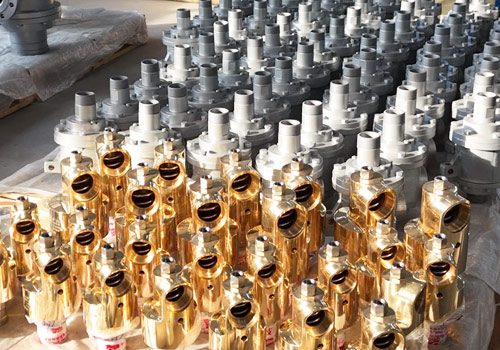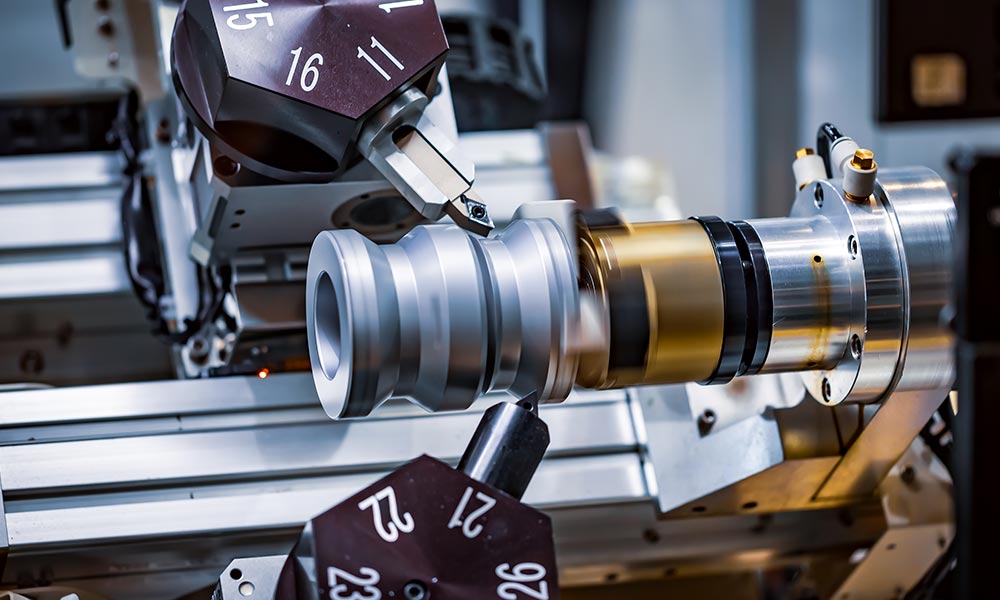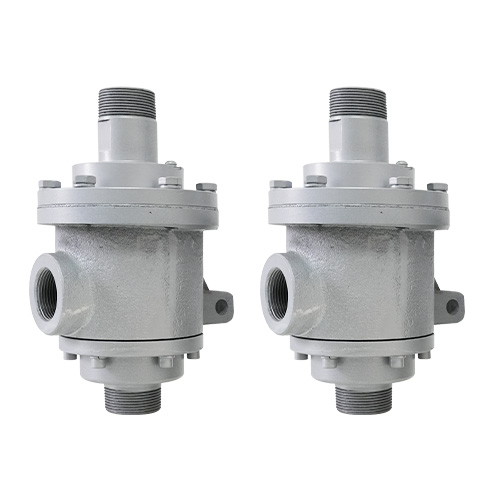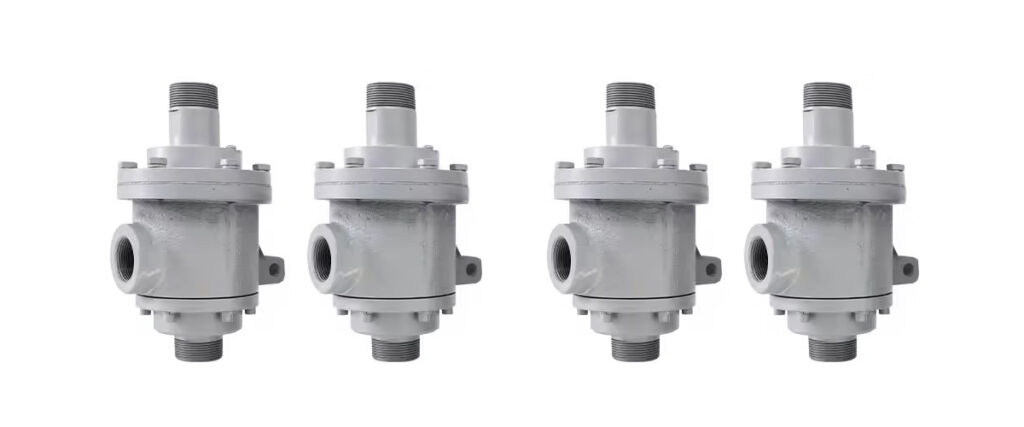Table of Contents
Introduction

In industrial steam systems, ensuring smooth and continuous steam transfer is crucial for maintaining operational efficiency. One of the key components that facilitate this process is the rotary joint for steam. While standard models are often sufficient for basic applications, custom-designed rotary joints can provide far better performance, reliability, and longevity. Tailoring a rotary joint specifically for your system allows for improved energy efficiency and reduced maintenance needs. In this article, we will discuss the advantages of custom rotary joint for steam and how they can help optimize your equipment.
Key Benefits of Custom Rotary Joints in Steam-Powered Equipment
A custom rotary joint for steam is engineered to address the unique requirements of your system. Whether it’s managing high pressures or controlling precise steam flow, these joints are designed for maximum performance. Here’s why a custom option might be the right choice.
1. Tailored to Your System
The primary advantage of a custom rotary joint for steam is that it’s specifically designed to fit your system’s needs. Unlike generic solutions that try to meet a broad range of requirements, a custom joint is built to handle the unique pressure, temperature, and operational conditions of your steam system. This ensures that it performs at its best, even under extreme conditions, and minimizes the risk of unexpected failures.
2. Improved Efficiency and Performance
Custom rotary joint for steam are designed to streamline steam flow, reducing energy losses and boosting overall system efficiency. Their precise engineering minimizes friction and optimizes the connection between rotating and stationary parts. This leads to better performance, lower operating costs, and less downtime.
How to Choose the Best Rotary Joint for Steam Applications
Selecting the right rotary joint for your steam system is crucial to ensuring long-term efficiency and performance. Here are some important factors to consider when choosing a custom rotary joint:
1. Material Selection
The material of the rotary joint plays a significant role in its performance and durability. Since steam systems are often exposed to high temperatures and pressures, the material needs to withstand these extreme conditions. Common materials include stainless steel, which resists corrosion, and high-temperature alloys that can handle the stress of continuous steam flow. Choosing the right material helps ensure the longevity of the rotary joint and prevents failures due to material degradation.
2. Pressure and Temperature Ratings
Each steam system operates under specific pressure and temperature conditions. When choosing a custom rotary joint, it’s important to ensure that it is rated to handle these specific conditions. A custom joint is designed to cope with your system’s exact pressure and temperature ranges, providing the necessary durability and reliability. This reduces the risk of premature failure, ensuring that the joint performs as needed for the long term.
Common Issues Solved by Custom Rotary Joint In Steam Systems
Steam systems often face issues like steam leaks, wear, and operational inefficiencies. Custom rotary joint for steam can solve these problems with superior sealing, durability, and performance.
1. Preventing Steam Leaks
Steam leaks can be a major issue, leading to significant energy losses and reduced system efficiency. Custom rotary joint for steam are engineered with advanced sealing technologies to prevent leaks and ensure a tight, efficient connection between rotating and stationary components. This improves system reliability and reduces waste.
2. Reducing Wear and Tear
Constant movement, high pressure, and extreme temperatures contribute to the wear and tear of components in steam systems. Custom rotary joint for steam are designed to withstand these harsh conditions, using durable materials and designs that minimize wear. This leads to fewer replacements and reduced maintenance needs.
Why Custom Rotary Joints Are Essential for Steam-Powered Equipment

Custom rotary joint are crucial for ensuring the performance and safety of steam-powered equipment. These joints are designed to meet the specific challenges of high-pressure and high-temperature systems, providing improved efficiency and greater reliability compared to standard solutions.
1. Improving Safety
Steam systems operate under extreme conditions, and the failure of a rotary joint can lead to dangerous leaks, pressure build-up, or even catastrophic accidents. Custom rotary joint are engineered to handle these challenges and offer better sealing, pressure tolerance, and overall safety. By using a custom solution, you can ensure that your system runs safely, reducing the risk of accidents and downtime.
2. Boosting Efficiency
Custom rotary joint help optimize steam flow, ensuring that energy is used more efficiently. A well-designed rotary joint reduces the chances of steam loss, preventing unnecessary energy consumption. This not only improves system efficiency but also lowers operational costs, making your steam system more sustainable in the long run.
The Role of Materials in Custom Rotary Joint for Steam Systems
The materials used in custom rotary joint play a significant role in their ability to withstand high temperatures and pressures. Depending on your system’s needs, materials such as stainless steel, copper alloys, and bronze are commonly used to ensure durability and resistance to corrosion.
| Material | Advantages | Common Applications |
|---|---|---|
| Stainless Steel | Corrosion-resistant, high strength, durable | Power plants, chemical industries |
| Copper Alloys | Excellent thermal conductivity, corrosion-resistant | Food processing, pharmaceutical industries |
| Bronze Alloys | High strength, wear-resistant | Heavy machinery, industrial systems |
How Custom Rotary Joint Prevent Erosion and Wear in Steam Systems
Erosion and wear are significant concerns in steam systems, as high-pressure steam can gradually damage the components. Custom rotary joint are designed to combat these issues by using specialized materials and coatings that reduce the impact of steam flow and prevent premature wear.
1. Specialized Coatings
Many custom rotary joints feature specialized coatings that protect them from the high-temperature and high-pressure steam, preventing erosion and ensuring a longer service life. These coatings can significantly extend the lifespan of the joint, making it a more cost-effective solution over time.
2. Reliable Sealing
Custom rotary joints are engineered with high-quality seals that offer better resistance to steam leakage. These seals are designed to withstand the extreme conditions of steam systems, ensuring a tight fit and preventing leaks, which can lead to inefficiencies and safety risks.
Maximizing the Reliability of Steam Equipment with Custom Rotary Joints
Reliability is critical when it comes to steam-powered equipment. A breakdown can lead to costly repairs, downtime, and loss of productivity. Custom rotary joints help maximize the reliability of your system by reducing the chances of failure and increasing the longevity of your equipment.
1. Better Heat Resistance
High temperatures are a common factor in steam systems, and custom rotary joints are specifically designed to handle these conditions. The materials used in custom joints are chosen for their ability to withstand heat, which helps avoid degradation and ensures that the joint continues to perform reliably.
2. Reduced Downtime
With a custom rotary joint, your system is less likely to experience unexpected failures, meaning less downtime and more productivity. These joints are designed for maximum durability, which reduces the need for repairs and replacements.
The Future of Steam Systems: Integrating Custom Rotary Joints

Steam high speed rotary joint
As technology evolves, so do the needs of steam systems. Custom rotary joints are increasingly incorporating advanced features, such as smart sensors and environmentally-friendly designs, to meet the demands of modern industries.
1. Smart Integration
Smart technology is becoming more common in steam systems. Custom rotary joints can now be integrated with sensors to provide real-time monitoring of key parameters, such as pressure, temperature, and flow rates. This data can help operators optimize system performance and predict when maintenance is needed, reducing the risk of failure.
2. Sustainable Design
With an increasing emphasis on sustainability, many industries are focusing on reducing energy consumption and minimizing environmental impact. Custom rotary joints are now designed with these goals in mind, using energy-efficient materials and technologies that reduce waste and improve overall system sustainability.
Conclusion
When it comes to steam systems, investing in a custom rotary joint for steam can provide numerous benefits. These joints are specifically designed to address the unique challenges of your system, improving efficiency, reliability, and safety. By choosing a custom solution, you can enhance the performance of your steam-powered equipment while reducing maintenance costs and extending its lifespan. At Modern Sealing, we specialize in creating custom rotary joints tailored to your exact specifications. Contact us today to discover how our solutions can improve the efficiency of your steam system.
FAQ
What is a rotary joint for steam?
A rotary joint for steam is a mechanical device that enables steam to flow from a stationary source to a rotating component, ensuring a continuous, leak-free transfer.
Why should I choose a custom rotary joint for steam over a standard one?
Custom rotary joints for steam are tailored to meet the exact specifications of your system, ensuring better performance, reliability, and safety.
What materials are used in custom rotary joints for steam?
Common materials include stainless steel, copper alloys, and bronze, each offering high resistance to heat, pressure, and corrosion.
Can a custom rotary joint for steam improve energy efficiency?
Yes, custom rotary joints optimize steam flow, reduce leakage, and minimize energy waste, ultimately improving system efficiency and reducing costs.


